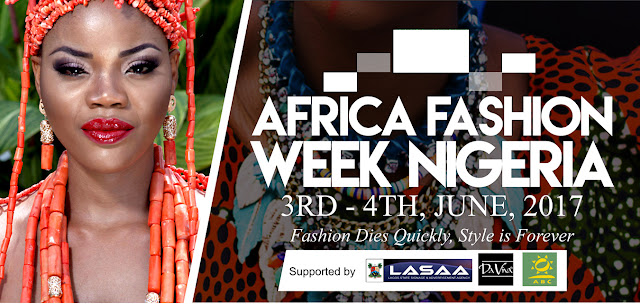African fashion is key to to the heritage of Africans and those in the African diaspora. From the vivid fabrics of kente cloth and ankara to the regalia of jewelry and head wraps; the history and future of African fashion continues to thrive. Here are some surprising facts about the fashion in Africa that may just surprise you.
1. Africa Fashion Week Nigeria #AFWN
Yes, Africa has it's own Fashion Week in Nigeria. This year it is being hosted June 3rd & 4th at The National Theater in Lagos, Nigeria. There will be 50 designers and Fashion Houses present. Africa Fashion Week Nigeria was created by Ronke Ademiluyi, along with Africa Fashion Week London, in order to showcase new and upcoming African clothing designers and to preserve the culture. For more information please visit the official website Africa Fashion Week Nigeria. To get the latest updates on twitter use the hashtag #AFWN
2. African Waist Beads
African waist beads are worn throughout Africa, but are especially beloved in Ghana. Traditionally they were worn underneath garments at the waist and considered an intimate part of a woman's attire. Waist beads were generally used to entice a husband, track weight gain or loss and uncover pregnancy. A little rattling of the beads and a husband is seduced. Movements on the placement of the beads on the waist will track weight gain or loss. The beads sit at the waist. If a woman gains weight they rise up, if she loses weight they will lower. Today many women wear waist beads internationally. They can be very striking alongside of a bikini. They can also still be worn intimately like lingerie. The choice is yours. The African waist beads pictured here are handcrafted by Sankofa Beads N Baskets. You can find them here Sankofa Beads N Baskets Etsy Store.
3. Gele
Gele headwraps are a traditional part of African fashion, primarily in Nigeria. They are very prominently worn to weddings and other festive occasions. As Nigerians have migrated to The U.S. and England the popularity of them has expanded to the western world. A Gele can be quite more colossal in the United States, according to Segun Gele - a Nigerian born makeup artist (now based in Texas) who is also internationally known for tying the Gele. According to Gele expert Segun Gele, back in Nigeria, the Gele tends to be much smaller and classic. The Gele head wraps that are worn in the U.S. are almost peacock like. No matter how you like your Gele styled there is sure to be one that fits your personality and style. You can purchase one from the renowned Segun Gele himself by connecting with his facebook page at The Real Segun Gele. Or if you would like to purchase a pre-tied Gele, such as the one pictured above check out Kamto Etsy Store.
African fashion is beautiful, vibrant and usually comes with a story behind it. Be on the look out for more articles in the African fashion series. God bless!
African fashion is beautiful, vibrant and usually comes with a story behind it. Be on the look out for more articles in the African fashion series. God bless!




Comments
Post a Comment